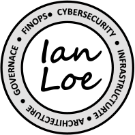DataOps Revolution: Transforming Data Management
DataOps, a portmanteau of "data" and "operations," is a set of practices, principles, and tools aimed at streamlining and automating data operations, ensuring the rapid and efficient delivery of high-quality data to end-users. It draws inspiration from DevOps, which emphasises collaboration between development and IT operations to accelerate software delivery and improve its quality. DataOps extends this collaboration concept to data-related processes. It involves cross-functional teams of data engineers, data scientists, data analysts, and other stakeholders working together to enhance data pipelines, reduce latency, and ensure data reliability.
As I am building up my data engineering team, I am adopting many of the things I have learned from building DevSecOps teams. Learning from application development and support, what matters these days are "Speed and Agility". With DataOps, just like DevsecOps, I can build or change data pipelines to respond quickly to changing business needs and market demands. By automating data pipelines and reducing manual interventions, data can flow seamlessly from source to destination, allowing for faster decision-making.
Unique to data, is the concept of "Data Quality". High-quality data is crucial for accurate analytics and business insights. DataOps practices can ensure that data is cleansed, transformed, and validated before it reaches its intended destination, this is not unlike automated code testing in DevSecOps structures.
Next we have "Collaboration". DataOps fosters collaboration between different teams within an organisation. Cross-functional teams can work together to define data requirements, build data pipelines, and address data-related issues promptly. This is probably harder than DevSecOps team as many users of data are not familiar with the IT world and would need a lot of help to onboard into the DataOps teams.
Lastly, we have the concept of "Risk Mitigation". By automating data operations and implementing robust testing and monitoring processes, DataOps helps mitigate the risk of data breaches, errors, and downtime. Prior to the implementation of DataOps, these functions were very ad-hoc in nature and can cause significant delays in decision making.
To successfully implement a DataOps team, there were a few learnings:
The hardest part was putting together a robust Data governance structure and framework. Many organisation are not mature in this area and it would take time to identify the right resources, educate the teams, and enforce the discipline needed to govern the data lifecycle.
DataOps represents a transformative approach to data management, aligning data operations with the principles of speed, quality, collaboration, and automation. As organisations continue to grapple with the challenges of managing and leveraging their data effectively, embracing DataOps can be a game-changer. By streamlining data operations and fostering collaboration among diverse teams, DataOps paves the way for data-driven decision-making, enabling businesses to stay agile and competitive in today's data-driven world.
As I am building up my data engineering team, I am adopting many of the things I have learned from building DevSecOps teams. Learning from application development and support, what matters these days are "Speed and Agility". With DataOps, just like DevsecOps, I can build or change data pipelines to respond quickly to changing business needs and market demands. By automating data pipelines and reducing manual interventions, data can flow seamlessly from source to destination, allowing for faster decision-making.
Unique to data, is the concept of "Data Quality". High-quality data is crucial for accurate analytics and business insights. DataOps practices can ensure that data is cleansed, transformed, and validated before it reaches its intended destination, this is not unlike automated code testing in DevSecOps structures.
Next we have "Collaboration". DataOps fosters collaboration between different teams within an organisation. Cross-functional teams can work together to define data requirements, build data pipelines, and address data-related issues promptly. This is probably harder than DevSecOps team as many users of data are not familiar with the IT world and would need a lot of help to onboard into the DataOps teams.
Lastly, we have the concept of "Risk Mitigation". By automating data operations and implementing robust testing and monitoring processes, DataOps helps mitigate the risk of data breaches, errors, and downtime. Prior to the implementation of DataOps, these functions were very ad-hoc in nature and can cause significant delays in decision making.
To successfully implement a DataOps team, there were a few learnings:
- Collaboration: Foster collaboration between different teams involved in data operations, breaking down silos and promoting knowledge sharing.
- Automation: Automate repetitive tasks, such as data ingestion, transformation, and testing, to reduce manual intervention and increase efficiency.
- Continuous Integration and Continuous Delivery (CI/CD): Apply CI/CD principles to data pipelines, allowing for continuous integration of new data sources and continuous delivery of high-quality data.
- Version Control: Implement version control for data artefacts and pipelines to track changes and enable rollbacks when needed.
- Monitoring and Feedback: Establish robust monitoring and alerting systems to proactively identify and address issues in data pipelines.
- Data Governance: Define and enforce data governance policies to ensure data accuracy, security, and compliance with regulations.
The hardest part was putting together a robust Data governance structure and framework. Many organisation are not mature in this area and it would take time to identify the right resources, educate the teams, and enforce the discipline needed to govern the data lifecycle.
DataOps represents a transformative approach to data management, aligning data operations with the principles of speed, quality, collaboration, and automation. As organisations continue to grapple with the challenges of managing and leveraging their data effectively, embracing DataOps can be a game-changer. By streamlining data operations and fostering collaboration among diverse teams, DataOps paves the way for data-driven decision-making, enabling businesses to stay agile and competitive in today's data-driven world.



















